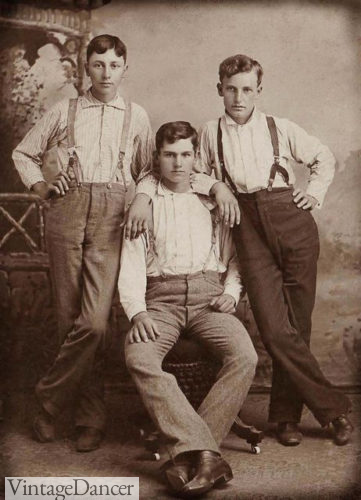Mar 25 2018 - Explore Amy Lieberts board Early 19th century work garments on Pinterest. In the 19th century boys were made to climb up chimneys to clean them.

Stitching The Fashions Of The 19th Century Who Dressed The 19th Century Elite
Throughout the century service was a major employer of women.

. These women did not have to do manual labor. Feb 18 2022 - Explore Charles Winchesters board Working Class Dress of the Eighteenth Century on Pinterest. Other women worked as charwomen or laundresses.
In the late 19th century about 80 of the population of the population was working class. Differences in class and gender presented vast dissimilarities in the lives of prostitutes in 19th century France especially in regards to adherence to regulationism treatment by police officials and a general standard of living. Ad Browse Discover Thousands of Arts Photography Book Titles for Less.
The new industrialized lifestyle of the second half of the 19th century gave rise to the ready- made garment industry. Fashionable dress as seen in our images was only available to the wealthy. In the 19 th-century all women wore several layers of clothing though the clothing got more complicated depending on their socioeconomic status.
See more ideas about regency fashion regency dress historical clothing. This practice was ended by law in 1875. By 1850 the cotton linen and woollen trades were fully mechanised in England.
They could wear different garments for more rigorous activities and whether those were appropriate activities for ladies they were always appropriate for the working class and enslaved was a source of debate in the 1800s. TUC Collections London Metropolitan University Womens occupations during the second half of the 19th and early 20th century included work in textiles and clothing factories and workshops as well as in coal and tin mines working in. This flap was universally held in place by two or three buttons at the top.
Many women worked at home finishing shirts or shoes. By the turn of the 19th century breeches pantaloons and trousers worn by all men were sewn with a flap in front called a fall front. Others made boxes or lace at home.
When history emerged as a scholarly discipline in British universities at the end of the 19th century it rarely took working-class people as its focus. No belts were worn. History was about the great and the good about kings queens archbishops and diplomats.
Within the gender divisions in prostitution class differences defined the type of clientele and amount of legal. Working class 19th century fashion Written By vukelj Sunday March 13 2022 Add Comment Edit In 14th century 15th century 16th century 17th century 18th century 19th century Americas ancient T term definition 1995 Thierry Mugler Birth of Venus Dress In 1990-1999 20th century garment analysis LGBTQ. Working Class Movement Library.
The need for a corset could well have been supplanted by alternative styles of dress which did not require a corset although. In order to be considered middle class you had to have at least one servant. August 4 2017.
In 1800 working-class people wore linen underwear men wore woollen outer clothing and women wore cotton linen and woollen dresses. Corsetry in the 19th century was not only fashionable but seemingly a trend women were expected to follow there were implications of lax morals if a woman chose not to wear a corset. Most servants were female.
Hand-spinning had largely died out which prevented industrious families from producing their own textiles to reduce costs. This was a factory based system that mass produced articles of clothing in standardized sizing. See more ideas about 18th century 18 century art 18th century clothing.
Male servants were much more expensive because men were paid much higher wages. While clothing was determined by the days activities the basic underclothes or foundational layer for all outfits a chemise drawers stockings corset and petticoats remained fairly consistent. In the 19th century being a domestic servant was a common job for women.
Historians studied reigns constitutions parliaments wars and religion. A North London street 1950s. However standardization was only relative to each particular company or brand and thus wide variations in standard clothing measurements was common.

Working Class Victorian Life Witness2fashion

1910s Men S Working Class Clothing

1840 1849 Fashion History Timeline
Women S Fashion In The 19th Century Historic Hudson Valley

Working Class Fashion Late 19th Century Ireland R Historicalcostuming

A Working Class Family Circa 1880 Victorian Life Class Outfit Victorian Clothing

Overalls For Women Victorian Fashion Edwardian Fashion Fashion

0 comments
Post a Comment